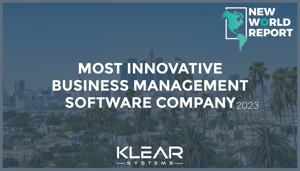
The average search for business management software devotes more time to evaluating standard features instead of evaluating what is really important: the business benefits!
It is important to know where the business experiences the biggest productivity losses and highest error rates in the entire transaction cycle.
With this information, determine how inaccuracies are affecting the business and seek to uncover which tasks require automation.
Begin by identifying the problems you experienced this year because your existing system was not adequate and follow these steps to focus, save time and find the perfect software fit for your business.
- Create a task force.
Business management software affects the entire organization. One of the easiest ways to ensure cooperation is to involve representatives from every department from the start—including not-so-obvious groups like sales and human resources.
This may slow down the process and frustrate the situation slightly, especially if your old system is failing and time is of the essence, but in the long run a well-balanced task force saves time and guarantees that all departments will cooperate during the implementation phase.
- Aim high.
Many organizations do not aim high enough when they implement a new system. Just about any product can deliver financial statements and as a result, businesses should be looking for much more from a modern software solution.
Think about what information can boost productivity and profitability.
Maybe current gross profit by product, customer, or salesperson? Maybe trends on how customers and products are growing or declining? You may want to use financial ratios to measure your company’s performance against your competitors. Make a list of reports that will make a positive impact.
- Know what's special or unusual about your company.
Every organization has some sort of unique requirement that cannot be compromised on. Perhaps it is the need to track products by lot or serial number. Does your organization need to price product by warehouse location? Does your industry have special reporting techniques? Make a list of requirements unique to your organization.
- Know which features you can’t live without.
After consulting representatives from all departments of your organization, you should uncover a few system capabilities that are critical to your company.
These may include particular reports, tracking methodologies or other unique needs.
Once determined, your organization's "Must-Have Feature List" results.
- Look for software that can easily adapt to your business needs.
In order for a system to meet your business needs, it should mesh with your existing business practices and adapt to technological innovation. Ideally, you want software that’s simple, intuitive, and closely aligns to how you already do business.
A modern business management software solution should:
- Embrace industry-standard technology quickly and easily.
- Customize easily to fit the unique needs of your organization.
- Scale to the changing size of your company.
- Make integration a high priority.
Tightly integrating your financial accounting software with your other business management applications can significantly improve your bottom line. Connecting all departments internally and integrating connection to customers, suppliers, and other business partners externally can significantly reduce lead times and waste throughout the supply chain.
Your organization will streamline operations and gain a competitive edge by integrating your web store, retail management, business intelligence, customer relationship management, supply chain, and human resource management applications.
Tight integration will save you time, promote greater efficiencies, and add value to your business.
- Manufacturers/Distributors: Evaluate automated shipping and distribution systems.
Inventory that sits in your warehouse is cash your business could otherwise be using. When considering business management software, study what options are available to link the system with your warehouse management system.
The proper use of integration will pay your organization huge dividends.
This will be seen in the form of reduced inventory cycles, more efficient warehouse operations, less paperwork (including the corresponding reduction in input and other errors), and better order accuracy.
- Don’t forget about your sales team.
Study after study indicates that customer satisfaction and loyalty are crucial success factors. Customers are the life-blood of any organization. The better you are able to understand and satisfy customers, the more your business will prosper.
Closely linked Customer Relationship Management (CRM) software allows your organization to increase customer satisfaction.
The sales team has a much better understanding of customer purchasing habits, both in aggregate and individually. Research which customer management options are available with the business management software you are considering and how closely linked they are.
- Be prepared to extend your business to the web.
Software optimized to leverage future e-business opportunities delivers a significant strategic advantage. Look for business management software with strong e-business capabilities, even if e-business functionality is not one of your current requirements.
Areas to consider include support for business-to-consumer and business-to-business buying and selling, the ability to empower employees through the in-house and browser-based applications, and the capability to extend systems through mobile, wireless applications.
Choosing a software manufacturer dedicated to e-business tools will ensure that your system can grow to match your organization’s evolving strategic goals.
- Look for integrated web store systems.
A web store is seriously lacking if it doesn’t integrate with your back office. When shopping for web store creation and management software, look for one that will eliminate time-consuming manual re-entry of orders received via web.
It should seamlessly integrate with your accounting system without costly customization so web orders and payments can automatically flow through to your accounting system and changes to customer and inventory information in your accounting system should automatically flow through to the web store.
Furthermore, you should be able to process orders in either real time or batch mode.







